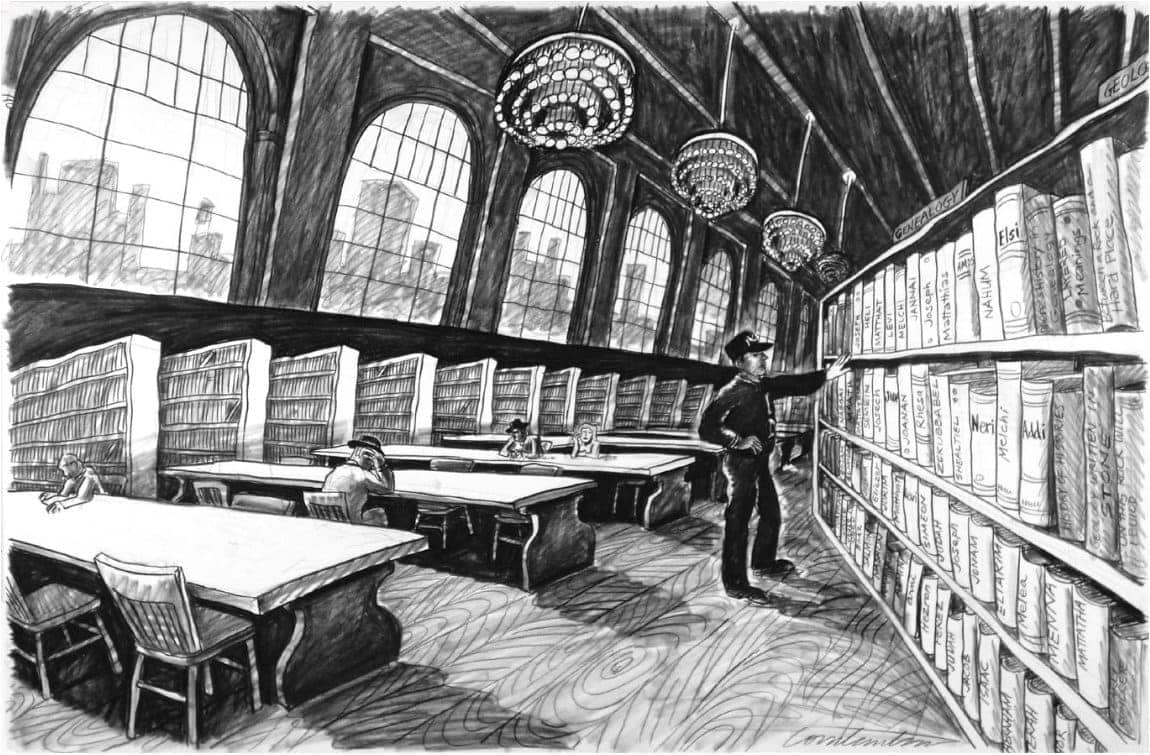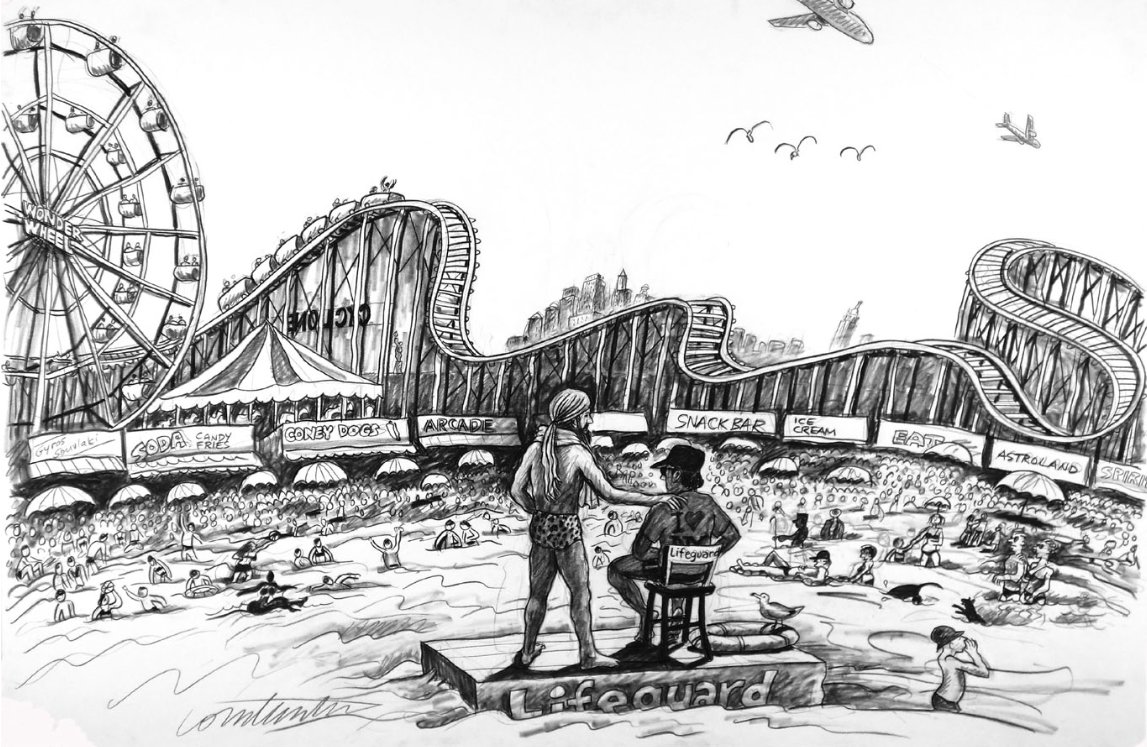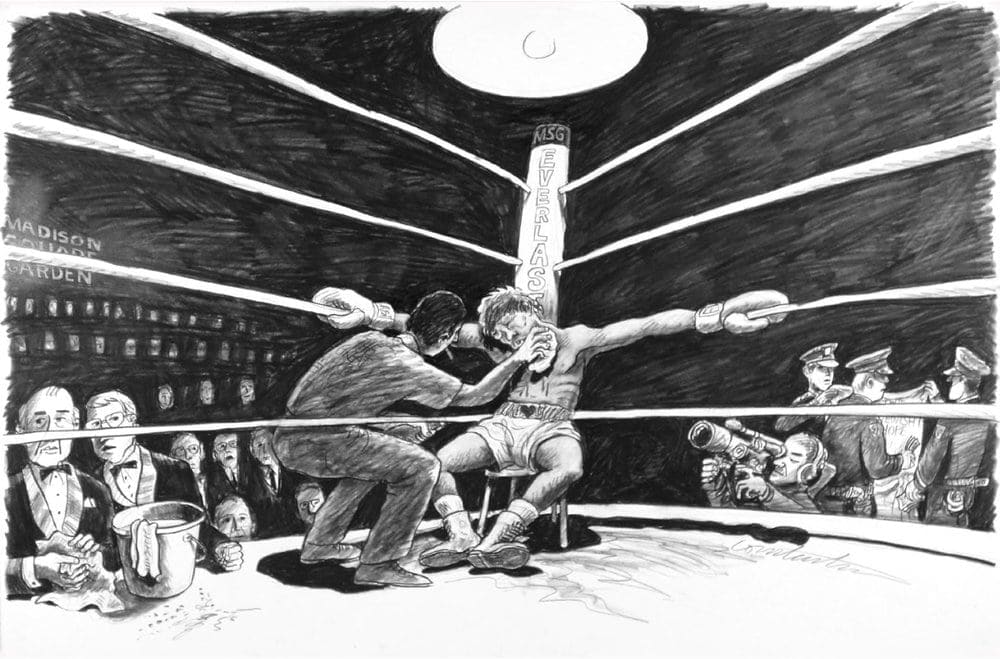
Adventist students in Romania have decided to share a book of drawings with their classmates that place Jesus in New York in hope that the unusual illustrations will prompt people to reach for the Bible for answers.
The Romanian chapter of AMiCUS, an organization that strives to share Jesus with non-Adventist students, chose the book, Jesus of New York: Premonitions of New York Teenager, as its main missionary tool for 2015, and demand has already exceeded the initial print run of 2,500 copies by the Adventist-operated Romanian Publishing House.
The 43 drawings by retired Andrews University professor Greg Constantine are replete with allusions to characters, situations, actions, dialogues, and objects from the gospel stories that the students hope will encourage readers to double-check their literacy of the Bible.
“The Adventist students have a vision that their friends will be thus determined to grab a New Testament and read the gospels to discover for themselves the rich meaning of the life of Jesus,” said Adrian Bocaneanu, a Romanian church leader who attended the book’s launch with Constantine and 700 other people at a conference of AMiCUS, or Adventist Ministry to College and University Students, in the city of Stupini-Brasov on Nov. 29.
Each drawing is accompanied by a few words that provide clues to the time, location, characters, and story that is being referenced from the Bible. The text is followed by a paraphrase of the Bible passage that depicted in the drawing.
Here are three drawings with the text from the book:



Constantine, whose parents were born in a Romanian village, and who worked as an art professor at Andrews University for 43 years, said at the book launch that the drawings in modern-day New York show a young Jesus at a time before He embarked on his post-baptism ministry. The illustrations place Jesus in situations similar to those He later described in well-known stories and speeches.
"The idea for this series of drawings came to me as I struggled to contribute something for young people to identify with from Jesus' youth," Constantine said in the book's preface.
The drawings were produced in 1990 and presented in an exhibition in Bucharest in 2004, but this is the first time they have been published in a book. The publication was funded by the Romanian Adventist Church’s youth department and a private donor.
The book, which retails for 15 lei (US$4.20) is preceded by three other titles, all placing prominent painters in modern U.S. cities: Vincent van Gogh Visits New York (1983), Leonardo Visits Los Angeles (1985) and Picasso Visits Chicago (1986).
Early indications suggest that the book will be an effective way to reach Romanian young people with Bible truths, Bocaneanu said.
A selection of the drawings were presented to the public at an exhibition in the foyer of the main concert hall of Brasov on Dec. 1. The mostly young visitors expressed enthusiasm in discovering the hidden meanings of the drawings as explained by Constantine, who also signed dozens of books, Bocaneanu said.
“The exhibition is scheduled to tour other major cities in Romania with the implication that Jesus could have been an exemplary teenager in any of them, a friend to all, and a compassionate guide to the true life,” he said.